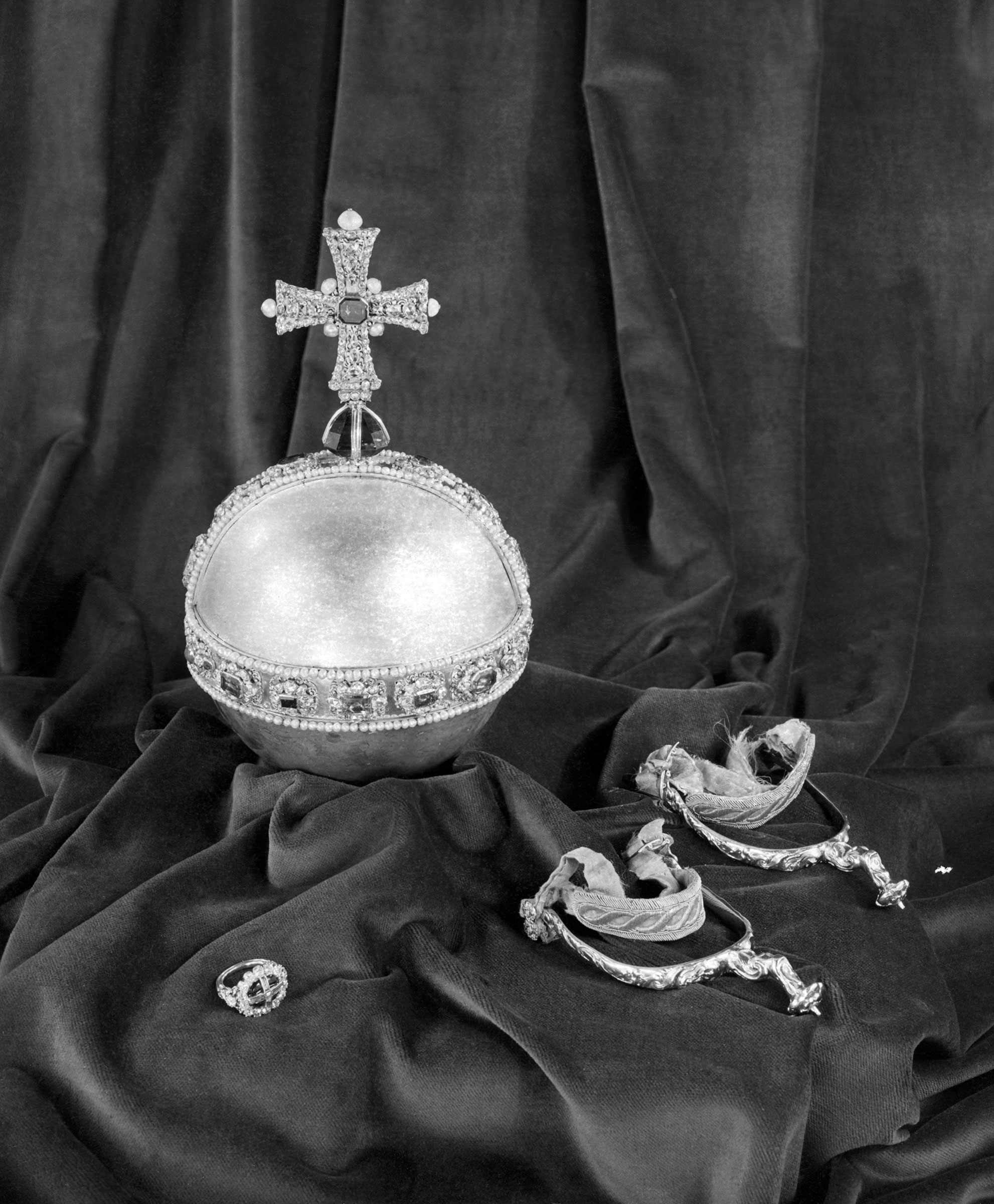The coronation of King Charles III, during which the British monarch will be formally crowned today in London’s Westminster Abbey, is a ceremony steeped in religious rituals and customs dating back centuries. To royalists, it represents a deeply meaningful moment in British history; to anti-monarchists, it’s an anachronistic spectacle that needn’t take place at all. What both can agree on, however, is that the coronation is, at its heart, perhaps one of the most extravagant and strangest of British traditions—the constitutional equivalent, writes the British historian Tom Holland, “of visiting a zoo, and finding a Triceratops in one of the enclosures.”
Perhaps no object better encapsulates this strangeness better than the so-called Great Golden Spurs. (Spurs, traditionally worn on the heels of horseback riding boots, have long been regarded as a symbol of knighthood.) These spurs, which feature a Tudor rose and a velvet-covered strap with gold embroidery, have appeared in coronations since 1189, symbolizing knightly values and chivalry. They were originally made for the coronation of Charles II in 1661 and were altered in 1820 for George IV’s coronation. While the spurs were traditionally fastened to the monarch’s feet, they will only be held at the sovereign’s feet today.

And the spurs aren’t just held by anyone. That responsibility falls to Simon Abney-Hastings, the 15th Earl of Loudoun who will be among 13 people and organizations appointed to play a ceremonial role in the coronation. His inclusion in the ceremony is by virtue of his ancestors, who have served as bearers of the golden spurs since King Richard I’s coronation in the 12th century. Originally from Wangaratta, Australia, Abney-Hastings has traveled more than 10,000 miles to fulfill the role.
“I am delighted and sincerely honored to accept the invitation by the Crown to perform the Bearer of the Great Golden Spurs role at the Coronation of King Charles III,” Abney-Hastings wrote last month on Facebook, where he regularly posts updates to his 1,000 followers.
The irony, of course, is that some historians believe it is he, not Charles, who should be crowned. This is on the grounds that they believe Edward IV, who ascended to the throne in 1461, was illegitimate and that royal succession should have instead gone to his brother, George, Duke of Clarence, of whom Abney-Hastings is a direct descendant. But observers shouldn’t expect any attempted royal coups—the Earl of Loudoun told the Times of London that he has no royal ambitions.
Read More: The Enduring Oddness of King Charles III
The golden spurs are far from the only ornate props that will appear during the coronation. The ceremony will feature the Stone of Destiny, an ancient symbol of Scottish kings that was seized by King Edward I in 1296. (The Stone was briefly stolen back by a group of Scottish students in 1950, and since 1996 has been officially returned to Scotland, where it resides permanently when not in use at coronations.) There will also be three swords (representing mercy, spiritual justice, and temporal justice), a golden orb (which is placed in the right hand of the monarch, symbolizing both his power and the Christian world), and a special coronation spoon (which is used in the anointing of holy oil, the most sacred part of the coronation ceremony).
For most observers, the vast majority of whom would not have been alive for the last coronation of Charles’ mother, Queen Elizabeth II, these ornaments and the ancient roots underpinning them are strange and antiquated relics. Many of them will probably go unnoticed, upstaged by more familiar symbols of monarchy such as the crown, royal carriages, and Paddington Bear.
More Must-Reads from TIME
- Caitlin Clark Is TIME's 2024 Athlete of the Year
- Where Trump 2.0 Will Differ From 1.0
- Is Intermittent Fasting Good or Bad for You?
- The 100 Must-Read Books of 2024
- Column: If Optimism Feels Ridiculous Now, Try Hope
- The Future of Climate Action Is Trade Policy
- FX’s Say Nothing Is the Must-Watch Political Thriller of 2024
- Merle Bombardieri Is Helping People Make the Baby Decision
Write to Yasmeen Serhan at yasmeen.serhan@time.com